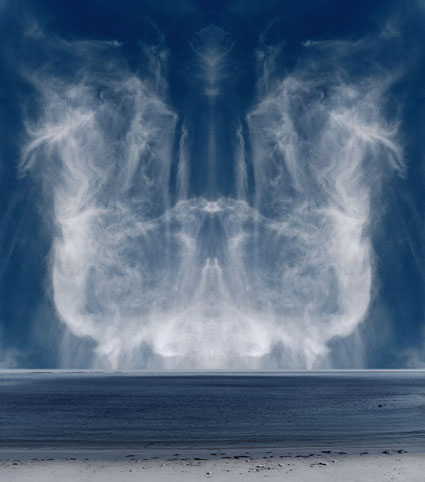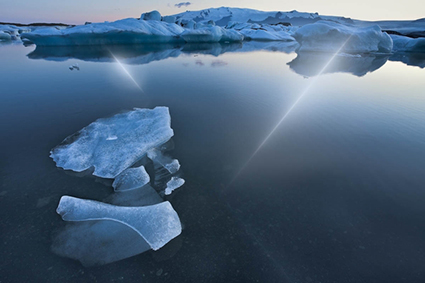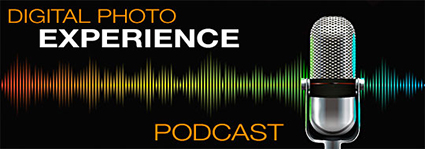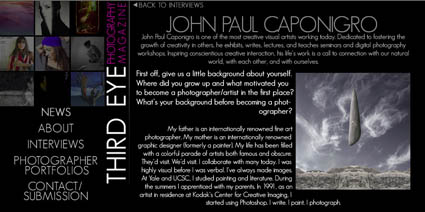15 Questions Answered

Alumni Dianne Morton interviewed me as part of her graduate studies.
She asked great questions, which I recommend you answer yourself.
Here are my answers.
What inspired you to become a photographer?
I was always driven to make images – even before I could talk. I was fascinated with two things about photography in particular; one, photography can be used to explore abstraction and metaphor; two, two people using the same equipment side-by-side can make very different images that reflect their personal natures. Pursuing painting first, the invention of Photoshop was my personal tipping point that made photography my primary medium.
Which photographers influenced or currently influence you?
Early influences include my father, Eliot Porter, and Ansel Adams. Photographers who challenge my current thinking in stimulating ways include Richard Misrach, Edward Burtinsky, Chris Jordan and Joel Peter Witkin. Many of my most important artistic influences come from people working in media other than photography – painters, filmmakers, sculptors, writers and even composers/musicians.
I’ve written quite a bit about my influences on my blog – and I plan to write more. It’s a useful process I recommend to everyone.
What motivates you to continue making photographs (intellectually or emotionally)?
I love doing the work. It’s endlessly challenging and rewarding.
Is there one particular piece of advice you could give to someone who has just picked up a camera for the first time?
Get clear about what you want to do and why. Only pursue opportunities that further that in some way. Make plans but stay flexible so you can make the most of every new opportunity.
How did you get from being an aspiring photographer to actually doing it full time, for a living?
I decided to do it and worked hard to make it happen. I made a plan. I pursued new opportunities that supported my long term goals. I didn’t plan to write, make public presentations, lead workshops, or consult for corporations; those opportunities presented themselves and they’ve all contributed to my overall success and the fulfillment of my long term goals.
Where do you think you have succeeded or failed?
I’ve succeeded in being a positive influence on the medium of photography and making positive contributions to many members of the photographic community. I haven’t succeeded in making substantial contributions that address my environmental concerns – yet.
What’s in your camera bag and what technology/software do you use?
Canon 5DMKIII and Lightroom/Photoshop. See my website for more on the tools I use,.
What is one thing you will never get tired of photographing?
Nature.
What is one thing you do NOT like to photograph?
Medical trauma.
Jump back in time….what would you do differently if you could? Do you have a cautionary tale?
I’d steal a little time every day to work on my most important goals. Compound interest pays big dividends. Big chunks of time are hard to find and often compromised or stolen completely. I’m still trying to get this right. Practice makes better. No matter where we are, I recommend we all start practicing this now.
Among your works, which one is your favorite? Why?
Exhalation I. It heralded a personal break through when my creative voice became stronger and clearer. I’ve had more responses to that image than any other, some of them very personal and touching.
Here’s a link to something I wrote about Exhalation I.
If you could sit across any one photographer with a big cup of awesome coffee, and talk photography/shop for an hour, who would it be and what would you talk about?
What a great question! It has so many possible answers. The final decision would be based on how honest the other person would be and how much they would be willing to reveal. And an hour’s not enough. How about an evening with dinner and wine?
I’d like to sit down with Alfred Steiglitz and Minor White and go further/deeper with the concept of equivalence. I have a feeling part of the solution would be to explore White’s mention of resonance.
I’d like to sit down with Eliot Porter (and possibly Ansel Adams at the same time, if there was total trust and no posturing), to review the history of photographers making environmental contributions and brainstorm ways of making more effective environmental contributions today (if he/they were up to date on what’s happened since his/their death). But then, after engaging this question, I realize I should do this now with Robert Glenn Ketchum. Maybe I should even write a book about it. See what a great question that was?
What’s your favorite quote?
“The only real voyage of discovery consists not in seeking new landscapes but in having new eyes.” – Marcel Proust
Above all, what inspires your art the most?
Nature.
Finally, can you sum up your photography in just four words?
Creative Conscientious Environmental Interaction
Enjoy more interviews here.





